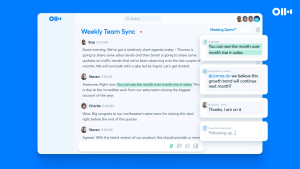AI meeting transcription software has become a crucial tool in modern business environments, enabling efficient documentation of meetings and discussions. With advancements in technology, these tools not only transcribe speech into text but also offer features like speaker differentiation, making it easier to follow who said what during a meeting.
Key Features and Capabilities
Speaker Differentiation
One of the most significant features of AI meeting transcription software is its ability to differentiate between speakers. This is achieved through a combination of voice recognition and machine learning algorithms that analyze various aspects of speech, such as tone, pitch, and speaking patterns. This technology enables the software to identify individual speakers accurately, even in meetings with multiple participants.
Accuracy and Efficiency
The accuracy of speaker differentiation is crucial for the effectiveness of meeting transcription. Modern AI transcription software boasts high accuracy rates, often exceeding 90%. This level of precision ensures that the transcribed text is a reliable record of the meeting. Additionally, the efficiency of the process is notable, with transcription occurring in real-time or shortly after the meeting, depending on the software's capabilities.

Practical Applications
Business Meetings and Conferences
In business settings, AI meeting transcription software is invaluable for documenting discussions and decisions. It helps in creating accurate minutes and provides a reference for those who could not attend the meeting.
Educational and Research Purposes
In educational and research contexts, such software aids in transcribing lectures, seminars, and interviews. This allows for better data collection and analysis, especially in qualitative research where spoken word data is critical.
Considerations for Choosing the Right Software
When selecting AI meeting transcription software, several factors come into play:
- Cost and Budget: The pricing of these tools varies. It's essential to consider both upfront costs and any ongoing subscription fees.
- Features and Specifications: Look for features like speaker differentiation, language support, and integration capabilities.
- Quality and Speed: Assess the transcription quality and the speed at which the software processes the audio.
- Ease of Use: The software should be user-friendly, with a straightforward interface and easy accessibility.
In conclusion, AI meeting transcription software, with its ability to differentiate between multiple speakers, plays a pivotal role in various settings, providing accurate, efficient, and easy-to-follow transcripts of meetings and discussions. When choosing such software, it's important to weigh factors like cost, features, quality, and user-friendliness to find the right fit for your specific needs.